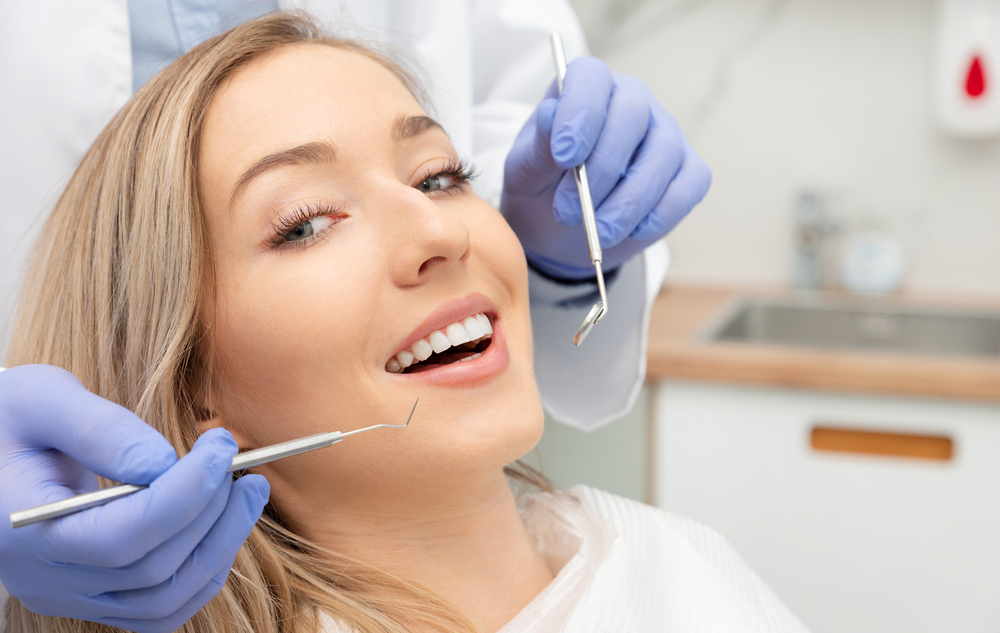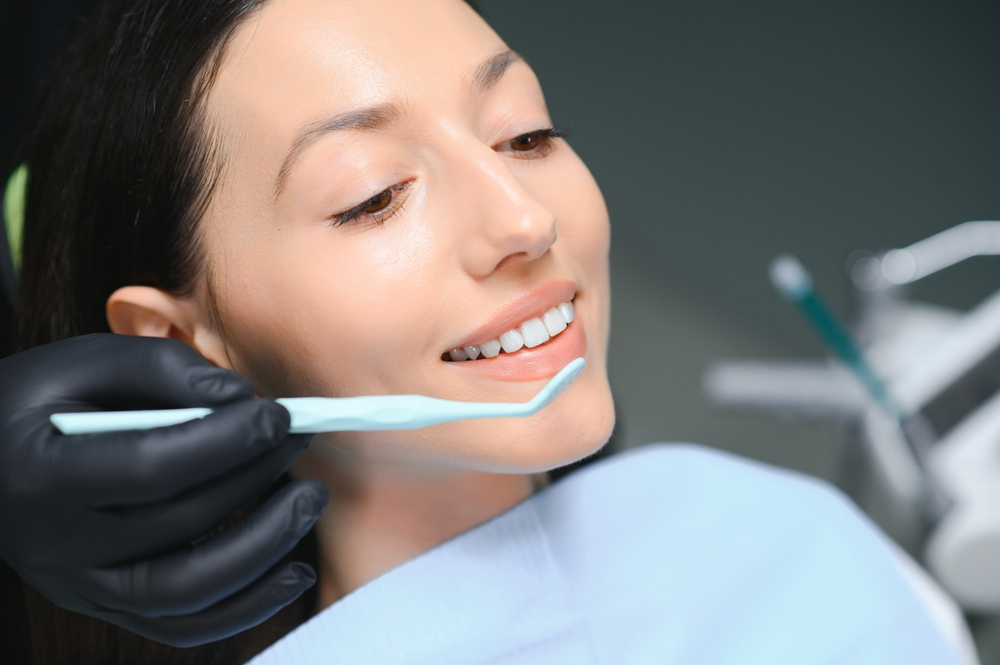Achieving a beautifully aligned smile can significantly enhance both your appearance and self-confidence. However, many individuals hesitate to pursue orthodontic treatment due to the inconvenience associated with traditional metal braces. Fortunately, Invisalign offers a contemporary alternative. With Invisalign’s personalised treatment timeline, we help straighten your misaligned teeth effortlessly, using custom plastic aligner trays. These trays are not only comfortable and easy to maintain but also discreet, allowing you to achieve a flawless smile without the noticeable presence of braces. Invest in your dental aesthetics and confidence with Invisalign, and enjoy the lasting benefits of a radiant smile.
Let us see how you can go ahead with the Invisalign Treatment Program.
Table of Contents
ToggleUnderstanding the Invisalign Treatment Process
Invisalign aligners are designed to be worn for 20 to 22 hours a day, including during sleep, but can be removed for daily necessities such as brushing, flossing, eating, and for special occasions like taking photos or playing a musical instrument. These custom-made aligners are switched out regularly to gently move your teeth into their correct alignment over time.
Consultation and Evaluation
You arrange a visit with us in advance, and on the scheduled date, you come in for a comprehensive dental check-up. Our dentist or orthodontist, skilled in Invisalign procedures, will assess your teeth, and create molds of your teeth, and the bite impressions for analysis. They will review the captures of digital impressions or scans of your teeth, and use these to generate a three-dimensional representation of your mouth. Next, they will decide if your teeth structure needs Invisalign treatment.
Customised Treatment Plan
Drawing from the 3D model impressions and our specialist dentist’s assessment, we craft a personalised treatment strategy for your teeth. This strategy outlines the precise, gradual progression of your teeth’s positioning during the entire course of Invisalign treatment.
Wearing Invisalign Aligners
Using the treatment plan, a series of clear, custom-fit aligners are fabricated specifically for your teeth. These aligners are meticulously engineered to adjust your teeth incrementally. You’ll transition to a new set of aligners every two weeks, wearing them for 20 to 22 hours daily to attain the anticipated outcome. They are to be removed solely for eating, drinking, brushing, and flossing. With each subtle shift of your teeth, you’ll advance to the subsequent set in your aligner sequence.
Monitoring Progress
During the course of your Invisalign treatment, our dentist will keep a close eye on your progress, and make any needed tweaks to your aligners or the overall treatment strategy.
Factors Affecting the Duration of Invisalign Treatment
When it comes to Invisalign, the duration of treatment can vary depending on several key factors. As an informative overview, let’s explore the main elements that can impact the length of your Invisalign journey.
Severity of Misalignment
The degree of a patient’s misalignment plays a significant role. More complex cases involving significant crowding, spacing, or bite issues may require a longer treatment timeline to achieve the desired results.
Compliance with Treatment
Patient compliance and diligence is extremely crucial. Wearing the aligners as prescribed, as well as for the recommended 20-22 hours per day, helps ensure the treatment effectively progresses as planned by our expert. Lapses in wear time can extend the overall duration for achieving the results as desired.
Dental Health
Optimal oral health is fundamentally important. Any existing conditions like gum disease or tooth decay may need to be addressed first before beginning the procedure or treatment. This would add time to the entire Invisalign process.
Frequency of Aligner Changes
Typically, patients switch to a new set of aligners every 1-2 weeks. The frequency of these changes can impact treatment length, with faster aligner transitions potentially shortening the overall time frame until you achieve the desired or projected results. By understanding these key factors, patients need to work closely with their assigned orthodontist to set realistic expectations, and ensure their Invisalign treatment is as efficient and effective as possible.
Typical Timeline for Invisalign Treatment
The Invisalign treatment process typically follows a predictable timeline, allowing patients to understand what to expect throughout their orthodontic journey. This timeline is divided into three key phases:
Initial Phase:
The initial phase of Invisalign treatment typically involves a comprehensive dental examination, impressions, x-rays, and digital scans of the patient’s teeth. These records are used to create a customised treatment plan, which maps out the step-by-step movements of your teeth over the course of the treatment. Patients will receive their first set of clear aligners and begin the process of gradually shifting their teeth into the desired position.
Mid-Treatment Phase:
During the mid-treatment phase, the patient will receive a series of custom-made, clear aligners that are worn for approximately two weeks at a time. As the treatment progresses, the aligners will gradually shift the teeth into their desired positions. Regular check-ups with the orthodontist will ensure that the treatment is on track and make any necessary adjustments. This phase can last several months, depending on the complexity of the case.
Final Phase:
Towards the end of the treatment, the patient’s teeth will have reached their final, corrected positions. As the patient nears the end of their Invisalign treatment, the final phase involves the use of the last set of aligners to fine-tune the positioning of the teeth. Our orthodontist will ensure that the bite is properly aligned and the patient is satisfied with the results. They will also provide the patient with a retainer to wear after the treatment is complete, which helps to maintain the new, straighter smile.
Throughout the entire Invisalign treatment process, patients can expect to visit their orthodontist every 4-6 weeks for progress monitoring and aligner adjustments. With proper care and compliance, Invisalign can provide a discreet and effective solution for achieving a beautiful, healthy smile.
Tips for Expediting Invisalign Treatment
Invisalign is a popular orthodontic solution that uses a series of clear, removable aligners to gradually straighten teeth. While the treatment process can vary for each individual, there are several steps patients can take to help expedite their Invisalign journey.
Follow Dentist’s Instructions
It’s crucial to closely follow the instructions provided by your dentist or orthodontist. This includes wearing the aligners for the recommended number of hours per day, typically 20-22 hours in most cases, and switching to the next set of aligners on the prescribed schedule.
Maintain Good Oral Hygiene
Proper oral hygiene is essential during Invisalign treatment. Be sure to brush and floss your teeth thoroughly before inserting the aligners, and clean the aligners themselves regularly to prevent the build-up of bacteria, plaque, and tartar!
Wear Aligners Consistently
Consistency is key when it comes to Invisalign. Patients who wear their aligners as directed, removing them only for eating, drinking, and oral hygiene, tend to see results faster, and sooner than those who miss following the instructions conveyed in the beginning.
Attend Regular Check-ups
Regular check-ups with your dentist or orthodontist are crucial for monitoring the progress of your Invisalign treatment. These appointments allow your healthcare provider to make any necessary adjustments to your treatment plan and ensure that your teeth are moving as expected. By following these tips, Invisalign patients can help expedite their treatment and achieve their desired results more efficiently.
Conclusion
Invisalign is a popular orthodontic treatment that uses a series of clear, removable aligners to gradually straighten teeth. The Invisalign treatment process involves several key steps: The Invisalign process is designed to be discreet, comfortable, and convenient, making it a popular choice for both teens and adults seeking to improve the appearance of their smiles. For more information, you can visit your nearest dentist in Charlestown!
FAQ
Yes, Invisalign treatment can often be faster than traditional braces. According to a study comparing Invisalign to conventional braces, patients with mild-to-moderate class I malocclusions treated with Invisalign completed treatment in an average of 11.5 months, while patients treated with traditional braces finished in an average of 17 months. However, the duration of treatment can vary depending on the complexity of the case. Traditional braces are often used for more complex orthodontic issues, and the treatment duration often takes longer than Invisalign, typically lasting between one to two years.
Yes, like any medical treatment, Invisalign does come with potential risks or side effects, in case of severe orthodontic misalignments or hygiene. Here are some of the risks associated during Invisalign treatment:
- Exposed Tooth Nerves due to receding gums, improper hygiene, and exposed nerves due to caries or tooth damage.
- Any previous dental work done, including fillings or crowns might be damaged by Invisalign and the new bite.
- Any small amounts of food particles and plaque quickly build up because they are trapped inside the aligners, which might lead to tooth decay.
- If patients don’t properly clean their teeth, it may result in cavities, gum disease, and teeth staining.
Yes, some patients may experience discomfort during Invisalign treatment, especially when first starting treatment or switching to a new set of aligners, due to the pressure exerted on the teeth to realign them. The usually temporary discomfort is simply pressure rather than pain. It subsides after a few days as your mouth adjusts to the new aligners.
Everyone’s experience with Invisalign varies, with some people experiencing more discomfort than others. Remember, it’s crucial to wear the aligners as directed by your orthodontist for the treatment to be effective. Regular check-ups with your orthodontist helps monitor your progress and address any issues arising during treatment.

Dr David Sweeney
For over 20 years, David has been practising dentistry with positive documented results. When establishing Your Smile, he wanted an environment where patients would feel comfortable and relaxed as soon as they walked in. He treats everyone like a family member and has the ability to make everybody feel at ease.






